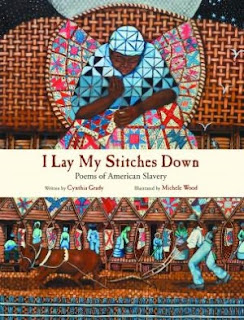Mavis Elizabeth Betterly (better known as May B.)
is about twelve years old.
is about twelve years old.
Growing up in a soddy
on the plains of Kansas.
May wants to be a teacher
but is struggling to learn to read.
Her father hires her out
to Mr. and Mrs. Oblinger.
Drives her the fifteen miles
out onto the prairie
promises he will be back
to pick her up at Christmas…
A debut novel
told in verse
Would be great for a unit on
the Westward Movement
or life on the prairie.
Could be paired with
the Little House books
or Sarah Plain and Tall.
A quick and compelling read.
Drives her the fifteen miles
out onto the prairie
promises he will be back
to pick her up at Christmas…
A debut novel
told in verse
Would be great for a unit on
the Westward Movement
or life on the prairie.
Could be paired with
the Little House books
or Sarah Plain and Tall.
A quick and compelling read.















